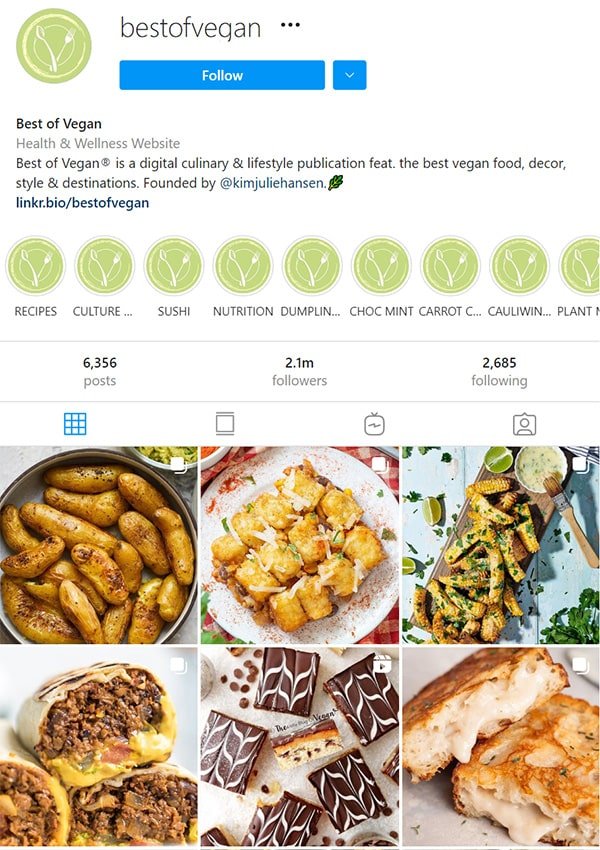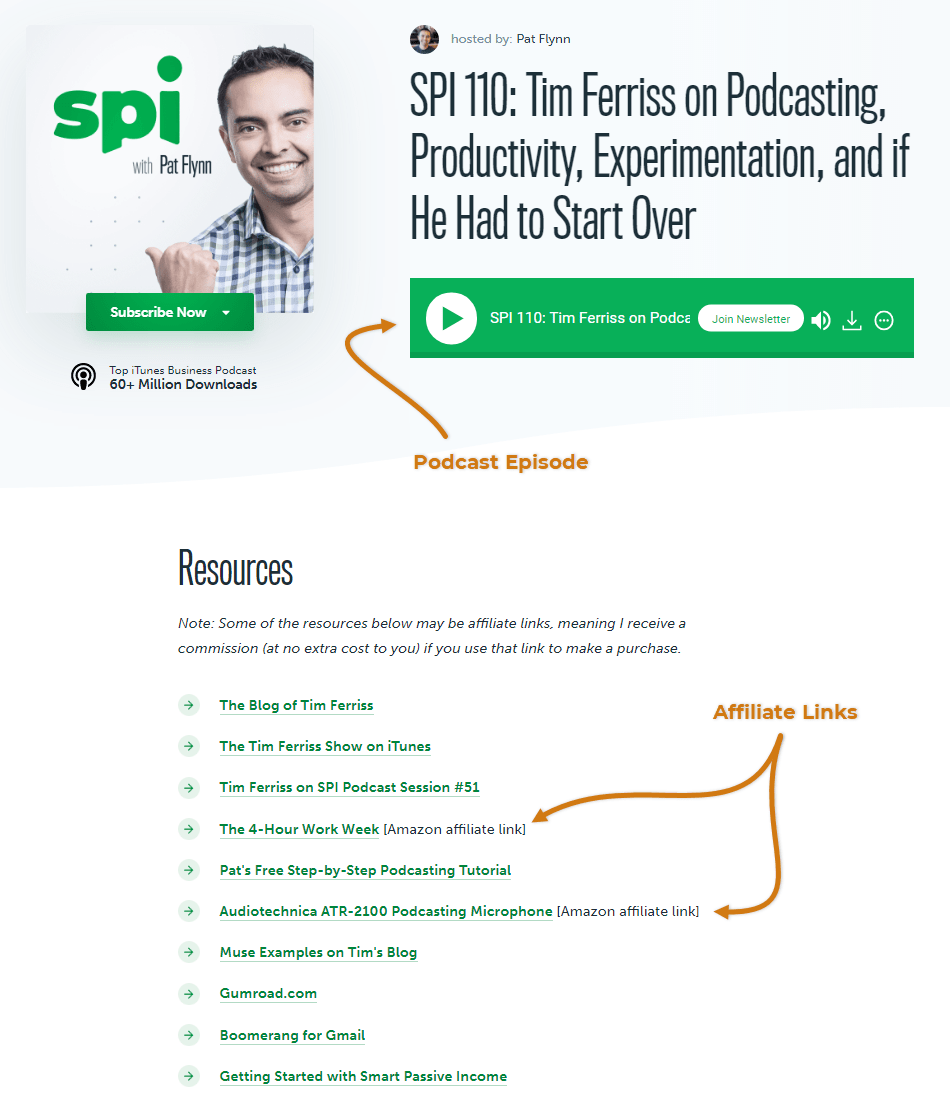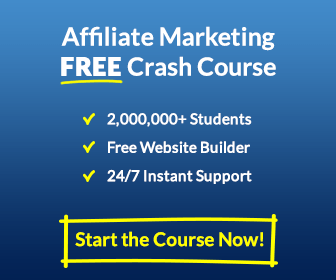Affiliate marketing is the process of earning commissions for promoting affiliate products.
While you can advertise your chosen affiliate products via dozens of different digital marketing channels, not all of them are equally efficient. Implementing the wrong ones could prolong your journey to affiliate success for months or maybe even years as well as significantly increase your chances of failure.
In an attempt to point you in the right direction and save you from wasting precious time and money marketing your affiliate products inefficiently, in this article, I’m going to be outlining the 12 Best Affiliate Marketing Promotion Methods.
Let’s take a closer look.
What Are Affiliate Products?
An affiliate product is any product or service created and distributed by a third-party online merchant you can get paid commissions for promoting.
To give you an example, since Amazon runs an affiliate program, every single product found in its online store is an affiliate product.
Now that we’re on the same page let’s start discussing how to effectively promote your chosen affiliate products.
Best Affiliate Marketing Courses
Best Affiliate Courses
12 Best Methods of Promoting Your Affiliate Products
The speed and magnitude of your affiliate success are almost exclusively dependent on how efficiently you promote your affiliate products. Implementing the wrong affiliate marketing promotion techniques is like shooting yourself in the foot.
If you’d like to become a successful affiliate marketer sooner rather than later, I strongly suggest that you invest only in the most high-performing online marketing channels, such as:
- Blog
- Content Publishing Platforms
- Social Media
- YouTube Channel
- PPC (Pay Per Click)
- Solo Ads
- Online Communities
- Email Marketing
- Digital Products
- Live Webinars
- Direct Banner Advertising
- Podcast
1. Blog
One of the most efficient and most used channels for promoting affiliate products is a blog.
A blog (short for “weblog”) is a website or part of a website that consists of regularly published content in the form of articles or else “blog posts” on one or multiple subjects.
Blog articles come in many different shapes and sizes, such as:
- Product Reviews
- Tutorials
- Roundups
- Case Studies
- Listicles
- Personal Stories
- & more
For example, what you’re reading right now is a listicle published on the Dear Boss I Quit blog that covers the subject of promoting affiliate products.
Marketing your affiliate products on a blog can be achieved by strategically embedding their respective affiliate links in image banners, in-text hyperlinks, floating bars, popups, and more.
Nowadays, thanks to the enormous latest advancements in site-building technologies, starting an affiliate blog isn’t as complicated and pricey as it used to be a few years ago.
The 17-minute video right below outlines the process of launching a simple WordPress-based affiliate blog in just 30 seconds without spending a single dime, even if you’re the least tech-savvy person in the world.
Another way of promoting your affiliate products via blogging, but without actually launching a blog of your own, is by using content publishing platforms.
2. Content Publishing Platforms
Content publishing platforms are third-party blogs that allow you to leverage their existing infrastructure towards writing, publishing, and distributing blog posts without having to put together a blog of your own.
A few of the most well-known and most widely used content publishing platforms include, but aren’t limited to:
- Medium
- Blogger
- LinkedIn Articles
- & Ezine Articles
The primary advantage of promoting your affiliate products on such platforms is that most of them have massive, well-established audiences. For example, Medium receives 85 – 100 million active readers per month.

Getting just a tiny fraction of such a large number of users interested in reading your content and purchasing some of the affiliate products you promote could yield thousands of dollars in monthly affiliate commissions.
The downside to such an approach is that your affiliate business will constantly be at the mercy of potentially unfavorable changes on the terms and conditions of the content publishing platforms you leverage.
For instance, for now, Medium allows affiliate links as long as you make an appropriate affiliate disclosure statement.
However, if someday Medium decides to prohibit affiliate links like Pinterest did a while back, all Medium-based affiliate businesses will vanish overnight.
3. Social Media
The second-best option for promoting affiliate products is social media.
According to statistics, social media is being used by 4.6 BILLION people for an average of 2.5 hours every day. Moreover, they’re free to join and operate, and they enable marketers to seamlessly get their affiliate products in front of potential buyers via dedicated, branded pages.
The five most used social media platforms among affiliate marketers are:
- TikTok
Picking the right social media platform for your affiliate endeavors boils down to two main factors.
- Your target audience – For instance, Gen Zers spend most of their time on Instagram and TikTok. On the other hand, millennials and baby boomers prefer hanging out on Facebook.
- The affiliate products you promote – For example, platforms that support long written copy like Facebook and LinkedIn are excellent for promoting B2B products and services. On the other hand, Instagram and Pinterest are better for promoting visually appealing B2C offers such as food, travel, clothes, cosmetics, and pastries.
Once you’ve determined which social media platform(s) you’re going to be advertising your affiliate products on, it’s time to start reaching out to your target audience by consistently publishing niche-relevant content optimally 1-3 times per day.
To give you an example, the Instagram page “Best of Vegan” that targets people in the vegan niche focuses on publishing posts and videos about vegan-related subjects like vegan recipes and cooking tips for vegans.

If you decide to do affiliate marketing on social media, you’ll need to emulate a similar approach tailored to your target niche.
4. YouTube
Another approach to promoting affiliate products that could be as effective as operating a blog is launching a YouTube channel.
YouTube is the second most populated social network after Facebook and the second most used search engine after Google, with 2.3 billion active users. On top of that, it’s pretty popular across all current generations, from baby boomers to Gen Z.

Promoting your selected affiliate products on YouTube is very straightforward.
First, get your YouTube channel up and running. Then start consistently publishing videos that appeal to your target audience.
For example, as you can see in the image right below, The Tech Chap YouTube channel that targets the tech gadgets niche focuses on video content that revolves around subjects such as:
- Laptop reviews
- Smartphone unboxings
- Product comparisons
- Purchasing guides
- Device tips & hidden features
- & more

Lastly, start placing your affiliate product links in the description below each video. Some marketers might even incorporate affiliate links to their video production gear such as cameras, microphones, light, software, etc.
Contrary to popular belief, building a decent income as an affiliate YouTuber doesn’t involve having millions of viewers. For instance, if you’re promoting an affiliate product that pays a $50 commission per sale and converts at an average rate of 1%, you can be earning $10,000 per month with as few as 20,000 monthly viewers.
5. PPC (Pay Per Click)
Pay-per-click is an online advertising model that involves placing ads on dedicated advertising platforms in exchange for a small fee per end-user ad click.
PPC ads can be broken down into multiple different categories, such as:
- Display Ads: Banners, texts, or images placed on third-party websites
- Paid Search Ads: Displayed on search engines like Google & Yahoo
- Social Media Ads: Served on websites like Facebook & Instagram
- Instream Ads: Video promotions shown before or during video streaming

A few of the most popular platforms for conducting your affiliate promotions on a pay-per-click basis include, but aren’t limited to:
- Google Adwords
- Bing
- YouTube
- & more
Running PPC ads is one of the fastest methods to get the affiliate products you promote before potential customers.
The downside to PPC is that the end-user ad clicks you pay for might not generate any actual affiliate sales.
Typically, beginners to affiliate marketing tend to experience immense financial losses until they’ve gathered enough feedback to understand how to piece together a profitable PPC campaign.
6. Solo Ads
Solo ads are almost identical to PPC in terms of billing.
However, unlike PPC, solo ads are email-based promotions delivered by third-party marketers directly to their email list.
Since solo ads enable you to piggyback on the solid relationships between other marketers and their email subscribers, they’re usually considered much more efficient for generating affiliate sales than PPC.
The main downside of solo ads is that you could end up wasting hundreds of dollars on subpar traffic purchased from vendors with poor-quality, low-converting email lists built by implementing shady techniques, such as:
- Purchasing subs from other marketers
- Using email scraping software
- Leveraging bot-filled lists
- Gathering niche-irrelevant subs
- & more
The best way to ensure that you won’t be falling into such time and money-wasting pitfalls is to always purchase your solo ads from nowhere but reputable providers like:
- Udimi
- TrafficForMe
- SmarterSoloAds
- & EasySoloAds
7. Online Communities
One of the simplest methods of promoting affiliate products is on online communities, such as:
- Forums (e.g., Reddit)
- Social media groups (e.g., Facebook)
- Q&A platforms (e.g., Quora)
- Real-time chat apps (e.g., Discord)
- etc
Begin by using Google to locate and join communities of people who are the most likely to be interested in purchasing the affiliate products you promote.
For instance, if you promote yoga gear, head over to Google and search for “best yoga forums.”

Furthermore, you could also browse through multi-topic communities like Reddit and Quora for niche-relevant discussion boards, subreddits, spaces, etc.
Promoting affiliate products in communities that revolve around unrelated topics will result in making no sales and receiving permanent bans.
Once you’ve found communities that suit your affiliate niche, check their respective user guidelines to determine whether, how, and where they allow affiliate promotions. For example, some communities prohibit the usage of more than one affiliate link per post, while others permit affiliate links only on post signatures.
Lastly, start investing time and effort in gaining the trust of your chosen communities by actively interacting with their members, sharing valuable insights, answering questions, and providing solutions to problems.
Do NOT start spamming affiliate promotions like a madman before delivering lots of upfront value to the members of any given community, or you’ll be setting yourself up for failure.
Nowadays, users and admins of most communities hate, report, and ban desperate affiliate spammers who seem like they care about nothing but making a quick sale.
8. Email Marketing
Despite its old origins, email marketing is still one of the most efficient methods for advertising affiliate products.
The first step to leveraging email marketing towards conducting affiliate product promotions is signing up for an email marketing platform, like:
- ConvertKit
- MailChimp
- SendinBlue
- MailerLite
- & GetResponse
Such platforms grant access to all the resources you’ll need to launch, maintain, and optimize your email marketing campaigns, such as:
- squeeze pages builders
- lead capturing forms
- automated email sequences
- mass email blasts
- campaign monitoring tools
- & more
After enrolling in an email marketing platform, you’ll need to create an automated email welcome sequence. That’s a series of emails distributed to your subscribers at predetermined intervals when they join your email list.
The key to creating a successful email welcome sequence is gearing at least 80% of your outgoing emails towards earning the trust of your subscribers by delivering valuable, informative pieces of content that contain no affiliate promotions.
Here’s what a typical email welcome sequence should look like:
- Upon subscription: Welcome email
- Day #2: A few words about your business
- Day #3: Introduce yourself and tell your story
- Day #4: Outline the benefits of your business
- Day #6: Set expectations straight
- Day #8: Share your top pieces of content
- Day #11: Provide answers to FAQ
- Day #14: Promote a relevant affiliate product
Stuffing your email sequence with promotions will turn most subscribers off and hurt your affiliate conversions.
Once your automated email sequence is in place, start gathering email subscribers by creating a squeeze page and a lead magnet.
A squeeze page is a standalone page designed to collect email addresses via a lead capture form.
A lead magnet is a valuable resource (e.g., ebook, template, discount, case study, free trial, etc.) offered as an incentive to anyone who subscribes to your email list.
Here’s an example of a squeeze page luring people in with a free trial lead magnet.

Lastly, start marketing your squeeze page via as many online marketing channels as possible (e.g., social media, PPC, blog, etc.)
9. Digital Products
Another pretty solid method to doing affiliate promotions is via digital products like eBooks, online courses, and even lead magnets.
For instance, if you’d like to pursue the weight loss niche, you can write a short eBook that narrates the story of a person who lost a lot of weight, within which you can then place affiliate links to some weight loss products that could help readers achieve similar results.
Another example is promoting antivirus software by teaching an online course on boosting digital security.
Whatever the case, always ensure that the digital products you create gear towards providing value to those who consume them.
Poor-quality, overly salesy digital products developed for the sole purpose of promoting affiliate products will most likely damage your reputation, diminish your conversion rates, and ultimately yield zero return on your investment.
Lastly, start distributing all your affiliate monetized digital products for free on:
- Social media
- Online forums
- Amazon Kindle
- YouTube
- etc
10. Live Webinars
An additional superb way of advertising affiliate products is hosting live webinars on platforms, such as:
- YouTube
- Adobe Connect
- Zoom
- Livestorm
- & more
According to RingCentral, live webinars have higher conversion rates than other marketing channels, converting between 5% and 20% of viewers into buyers.
The first step to leveraging live webinars towards promoting your affiliate products is determining your marketing angle.
For example, your marketing angle could revolve around outlining the benefits of your chosen affiliate product, revealing how it’s better than its competitors, explaining how it helped you or someone else overcome a problem or achieve a goal, etc.
Whatever your marketing angle is, you need to ensure that your live webinar is:
- educational
- valuable
- engaging
- & media-rich
Next, write your webinar’s script. Keep in mind that 1000 words correspond to 6 minutes of speaking time.
Once the script is ready, turn its most essential elements into a PowerPoint presentation. That’s going to be the focal point of your entire webinar, so make it look professional.
After that, start spreading the word about your live webinar via any other marketing channel you see fit (e.g., social media, PPC, blog, etc.)
Lastly, place your affiliate links at distinct spots, such as:
- The webinar’s description
- Live chat (if applicable)
- Your profile
- Inside the presentation
- etc
Here are three tips that could help you significantly boost the conversion rates of your live webinars:
- Focus on delivering value. Avoid making your webinar sound like a lengthy sales pitch.
- Start by introducing yourself. Most of your viewers won’t know who you are, so make sure to provide some info about yourself, explain what your webinar is about, and why they should listen to you.
- Activate your webcam. Place its feed at the left or right bottom corner of the webinar so that attendees can watch you making the presentation live.
11. Direct Banner Advertising
Direct banner advertising is yet another decent way of promoting affiliate products.
The process involves paying a fixed monthly fee for placing banner ads pointing to the affiliate products you promote on websites in your niche.
Direct banner advertising falls into the “paid ads” category, just like PPC.
However, contrary to PPC, direct banner advertising:
- can be less lucrative
- runs on a fixed monthly fee, not on a pay-per-click basis
- is more cumbersome and time-consuming
- involves a lot of manual outreach
- is more challenging to track, monitor, and optimize
Lastly, some websites might not allow you to have your banner ads linking straight to the affiliate products you promote. In such cases, you’ll have to use links pointing to a website or landing page that, in turn, contain your affiliate links.
12. Podcast
Last but not least, you can advertise affiliate products via a podcast.
A podcast is a series of live or recorded audio broadcasts around a particular subject. You can think of a podcast as the audible version of a blog.
The process of doing affiliate marketing on a podcast is relatively simple.
First, pick a topic that meshes perfectly with your selected affiliate products. To give you an example, a podcast on cooking would be ideal for promoting food blenders.
Secondly, sign up for a podcast hosting provider to store and serve your audio files as well as create and update your RSS feed, such as:
- Buzzsprout
- Captivate
- Transistor
- Podbean
- Resonate
- etc
Afterward, integrate your hosting service with as many popular podcasting directories as possible, like:
- Apple Podcasts
- Spotify
- Google Podcasts
- Stitcher
- & TuneIn
Once everything is in place, start producing high-quality podcast content.
Lastly, incorporate your affiliate links in the summary section of each podcast episode you publish.
Here’s an example of how one of the most successful affiliate marketers, Pat Flynn, markets affiliate products on his podcast.

The main downside of affiliate podcasting is that most audiences consume podcast content on the go, usually while doing something else like driving, cooking, or jogging.
As a result, even if your podcast listeners are genuinely interested in purchasing the products you promote, chances are many of them won’t be able to do so due to being preoccupied with other activities, thus losing tons of affiliate sales.
As such, I wouldn’t recommend using podcasting as a standalone promotional method but rather in conjunction with other higher converting marketing channels like a blog, a YouTube channel, or a social media page.
Affiliate marketing FAQs
Affiliate marketing is an online business model that involves promoting products or services created and distributed by third-party online merchants in exchange for getting paid a commission for each sale you refer.
In layman’s terms, affiliate marketing is the process of being compensated for helping businesses sell to more customers.
Here’s a bird’s eye view of how affiliate marketing works.
- You join a merchant’s affiliate program
- The merchant gives you a unique affiliate link that points to their e-shop
- You promote your unique affiliate link online (blog, forums, social media, paid ads, etc.)
- Every time someone clicks on your unique affiliate link and makes a purchase on the merchant’s e-shop, the merchant pays you a commission
There are thousands of successful affiliate marketers all around the world. Some of the most well-known ones are:
- Pat Flynn
- Matt Diggity
- Matthew Woodward
- Doug Cunnington
- & more
You can check out a roundup of my 17 favorite examples of affiliate success and their backstories right here.
- Billion-dollar industry
- Very low startup & operational expenses
- Huge income potential
- Flexible & versatile
- Passive income
- Simple to implement
- No technical background
- No customer support
- No physical setup
Affiliate marketers can be divided into five main income groups:
- Total beginners: $0 – $20,000 per year
- Low-level affiliates: $20,000 – $50,000 per year
- Intermediate affiliates: $50,000 – $100,000 per year
- High-level affiliates: $100,000 – $500,000 per year
- Super affiliates: $500,000+ per year
According to PayScale, the average annual income for affiliate marketers in the US is over $54,000 per year. Statistics reveal that 13% of affiliates earn more than $75,000 per year.
Some of the factors that influence how much you earn as an affiliate marketer include:
- seniority
- target niche
- available resources
- previous experience
- marketing efforts
- & overall mindset
Here’s a rough income growth timeline of a typical affiliate marketing business:
- months (0-3): no earnings
- months (3-6): first affiliate sale
- months (6-12): $100-$500 monthly
- months (12-18): $1000 monthly
- months (18-24): $3000+ monthly
This timeline isn’t a guarantee of future performance but rather a mere approximation of the income growth of an average affiliate business. Your own timeline could be shorter or longer than projected.
Over the years, I’ve seen aspiring affiliates striking a gold vein just a few months into the industry. On the other hand, I personally know people who’ve been struggling to grow their affiliate revenue to $1000 per month for several years.
Affiliate marketing is one of the most affordable money-making models out there.
Here’s a breakdown of everything you need to get started as an affiliate marketer along with their associated costs:
- web hosting & domain name: $2.95/month (Bluehost)
- keyword research tool: $49/month (Jaaxy)
- expert guidance: $49/month (Wealthy Affiliate)
- email autoresponder: Free for up to 1000 subs (MailerLite)
Please note that on top of expert guidance, Wealthy Affiliate also provides free access to hosting and a keyword research tool so you don’t have to purchase them separately.
Yes, you can do affiliate marketing without a website by promoting your affiliate links on other marketing channels, such as:
- Social Media
- Paid Ads
- YouTube
- Podcast
- etc.
The process of getting started with affiliate marketing can be broken down into the following four simple steps:
- Pick a niche
- Launch a blog
- Build an audience
- Promote affiliate products
No, you don’t.
Affiliate marketing is very simple to get started with by virtually anyone regardless of age, education, background, available capital, tech-savviness, professional network, etc.
In fact, most 6-figure affiliate marketers were no more experienced than you currently are when they first ventured into the affiliate marketing industry.
Nonetheless, being knowledgeable in fields like marketing, sales, content production, business management, etc., could help you reach your financial goals somewhat faster.
Conclusion
The efficacy of the methods you use to promote affiliate products primarily determines whether or not you’ll become a successful affiliate marketer.
Now that you’re aware of the 12 Best Affiliate Marketing Promotional Methods, you’re certainly on the right track in the pursuit of affiliate success.
If you’re a beginner affiliate, try not to overwhelm yourself by doing everything and being everywhere at once. Instead, ensure that you focus on the one marketing channel you feel the most comfortable with until you’ve mastered its basics.
At that point, start experimenting with other marketing strategies. Track their metrics and performance, and once you’re clear which ones produce the best results, combine them into a powerful, high-converting affiliate marketing funnel.
For instance, you could mix an affiliate blog with a squeeze page or a YouTube channel with live webinars and a podcast.
Regardless of which methods you decide to leverage towards advertising your affiliate products, never forget that constantly forcing affiliate promotions down your audience’s throat is a surefire way to failure.
Affiliate marketing is a game of value, not sales. The more value you deliver, the more affiliate sales you’ll be making.
If you have any questions or require further help, I encourage you to leave a comment right below or contact me right here, and I’ll do my best to get back to you as soon as possible.
Best of luck in your affiliate endeavors!
Harry, Founder & Creative Director at dearboss-iquit.com





